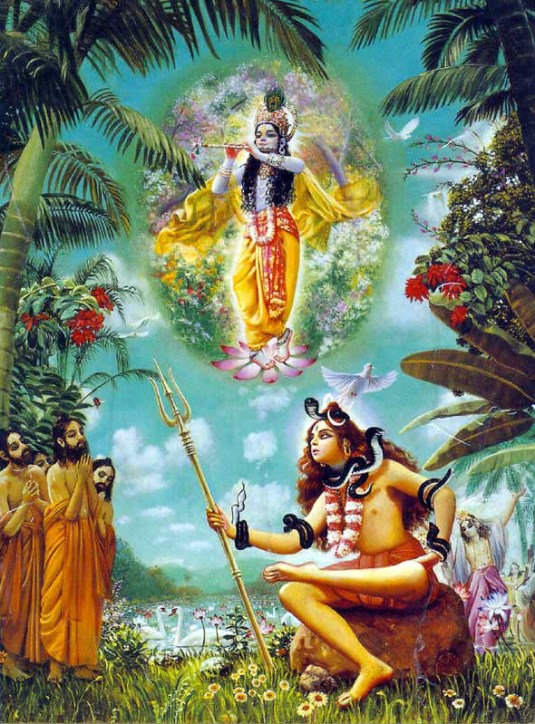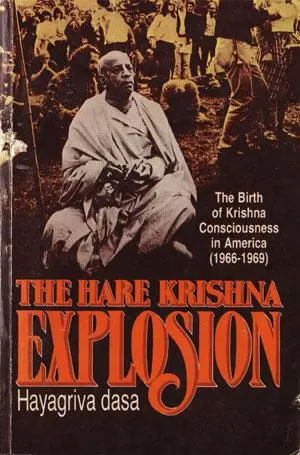
The following is an older article but one of great importance, with perhaps the only remaining document of the GBC summary report of the meeting that took place between May 27-29, 1977.
Officiating Acaryas
Editorial: “GBC Suppressed The Truth”
by Locanananda dasa
EDITORIAL, Dec 13 [1999] (VNN)
New evidence has just been discovered that suggests a GBC conspiracy to suppress instructions given by Śrīla Prabhupāda concerning how he wanted initiations to be performed after his departure.
In May of 1977, the members of the GBC were summoned to Vrndavana, India to meet with Śrīla Prabhupāda when His Divine Grace thought his departure from this world was imminent. His Divine Grace revealed to a committee of GBC members that he was going to recommend some of his disciples to act as officiating ācāryas to perform first and second initiations when he would no longer be with us. As evidenced by the following document, the GBC decided at the time that devotees throughout the world should not be informed of this most important revelation made by their beloved spiritual master.
The repercussions of the decision to suppress the truth and the subsequent deviation from Śrīla Prabhupāda’s instructions have left devoted followers of His Divine Grace deadlocked over the issue of guru succession and initiations in ISKCON for more than two decades.
The document in question is a summary report of the GBC meetings held during the three days from May 27-29, 1977. The report was sent out to all ISKCON temple presidents and begins with a list of names of the GBC members in attendance. The first point mentioned in the report is that a list of trustees of all ISKCON properties was submitted to Śrīla Prabhupāda. The second point states that committees were formed to improve the original charter and expand the Bureau of Management in India. Point number three deals with the questions posed by the GBC committee concerning how Śrīla Prabhupāda’s mission was to be continued under the direction of the GBC after his departure. It is this third item that is of great significance.
A review of the document shows quite clearly that the GBC deliberately omitted from the report Śrīla Prabhupāda’s answer to the question concerning initiations. This intentional omission was apparently made to conceal Śrīla Prabhupāda’s wishes from his disciples worldwide concerning the initiation procedures he wanted followed after his departure. Had this been an honest presentation of the facts, the report would have stated:
“When asked how first and second initiations would be performed after he was no longer with us, Śrīla Prabhupāda said that he was going to recommend some of his disciples to act as officiating ācāryas.”
The text of Śrīla Prabhupāda’s conversation with the GBC committee was not disclosed for many years, which has created a credibility gap between the leaders of ISKCON and ISKCON’s general membership.
Six weeks later, a letter issued on July 9th, 1977 bearing Śrīla Prabhupāda’s signature was sent to all temple presidents to explain changes that were being made in initiation procedures. It was the outcome of a discussion that had taken place two days earlier between Śrīla Prabhupāda and his secretary. In that conversation, to resolve the problem of an initiation backlog, Śrīla Prabhupāda first recommended that senior sannyāsīs could again perform initiation ceremonies as had been done before his illness. However, when the secretary reminded Śrīla Prabhupāda of the May 28th meeting with the GBC, this historic conversation evolved into the naming of the officiating ācāryas, referred to in the letter as “ritvik representatives.”
Śrīla Prabhupāda had said he was going to recommend some of his disciples to perform initiations on his behalf after his disappearance, and the July 9th letter was the fulfillment of that promise. According to the May 28th announcement to the GBC, those initiated during his physical presence by representatives of the ācārya would be considered his direct disciples, while those initiated after his disappearance by officiating ācāryas would be considered his second generation of disciples, or granddisciples. The difference was considered to be one of formalities, since all members of ISKCON throughout the course of its history would perpetually serve, worship and follow the teachings of their great preceptor ācārya, His Divine Grace A.C. Bhaktivedanta Swami Prabhupāda. That is the principle that unifies the International Society for Kṛṣṇa Consciousness.
The document presented below was transcribed exactly from the original which accounts for any spelling or grammatical errors. Because the only remaining copy may be the one in my possession, I recommend that devotees save copies in their files for future reference.
More





















